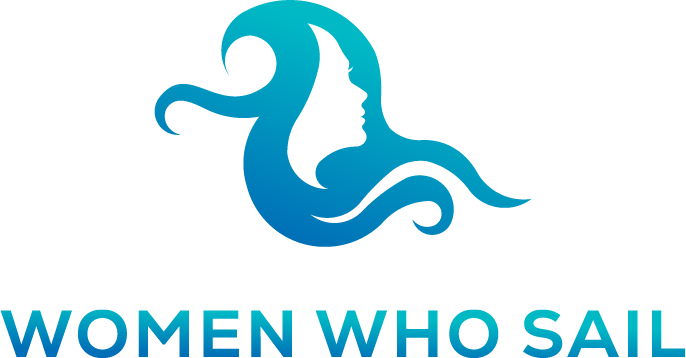BOATERS ASKED TO HELP SAVE WHALES
A right whale mother and calf feed
Whale Photo Credits: NOAA/NEFSC/Christin Khan
The images were collected under NOAA Fisheries MMPA Research permit number 17355.
*MMPA stands for Marine Mammal Protection Act
BY DARIA BLACKWELL
When Alex and I were setting off across the Atlantic the first time, we sailed north via Cape Cod and Maine. While crossing Stellwagen bank, we had a most magical experience. We encountered scores of right whales feeding all around us. With spinnaker up, we ghosted along gleefully, giggling like children. Looking into their eyes as they swam alongside was mesmerizing. The hull, acting like a stethoscope, magnified their whale song beneath us. So many voices in the sea. It was otherworldly. We’ve never forgotten those moments.
A few weeks ago, I had the opportunity to Zoom meet with three wonderful female scientists at NOAA. They have mounted an effort to help protect critically endangered North Atlantic right whales (Eubalaena glacialis). For several years, the waters off the coast of the US where the whales feed and go to calf, have been slow speed zones for commercial shipping when the whales are resident. In 2020, they have instituted a program to encourage recreational boaters to slow down to less than 10 knots as well. Approaching right whales at a distance closer than 500 yards is a violation of Federal and State Laws.
NOAA chose to focus specifically on right whales because it is thought there are no more than 400 remaining in the world.
We know that any vessel can harm a whale during a collision, especially a young calf. Two calves have already been struck and injured in US waters in 2020. We’ve known for a long time that the faster a ship travels, the more likely it is to encounter a whale on the ocean. Slowing down and keeping a good watch is a sure way to avoid these encounters. In helping sailors who were crossing the Atlantic from the Caribbean and Americas to Europe, the Ocean Cruising Club (OCC) had reports of four whale strikes in one month this year. One of these caused a catastrophic rudder failure and the boat sank. Fortunately, another yacht was close by and was able to rescue the skipper. We don’t know the fate of the whale.
NOAA chose to focus specifically on right whales because it is thought there are no more than 400 remaining in the world. The environmental pressure on right whales is enormous. Scientist Jean Higgins, acoustics expert Dr Danielle Cholewiak, and Allison Ferreira, Communications Lead for the Greater Atlantic Fisheries Office, generously gave me the lowdown on the recently launched program.
NOAA are expanding their notification program to vessels of all sizes, and also including acoustic information to help boaters avoid areas where these endangered right whales are detected. The hope is that at least boaters can slow down and keep a close watch to minimize whale strikes. Launched in August, and focusing on the East Coast of the United States, the right whale Slow Zones initiative uses maps to indicate boxed areas where boat speeds of 10 knots or less can help save right whales’ lives.
Boaters can access right whale Slow Zone information through an interactive map on NOAA’s website, by subscribing to email or text notifications for right whale Slow Zones under NOAA Fisheries New England and mid-Atlantic subscription topics, or through the Whale Alert app. The Whale Alert app, available for both iOS and Android devices, provides close to real time information about whale presence. In addition, it enables mariners to report sightings, thereby contributing to the body of knowledge of where whales can be found at any given time. Sightings can also be reported by calling the USCG on VHF channel 16 or by telephone to two locations.
All boaters can help save right whales and other species with a few simple steps:
Learn where the Slow Zones are – sign up for notifications.
Check the app to see where whales have been sighted or heard. Avoid or Slow Down to 10 knots or less when entering a Seasonal Management Area.
Keep a close watch and wide distance from whales in your vicinity.
Report all sightings.
Learn more about the Slow Zones and Whale Alert App on the NOAA website. Listen to the different species of whales on the NOAA Fisheries site.
The scientists underscored the importance of getting recreational boaters involved and spreading the word about the vulnerability of all whales and right whales in particular. We can all make a difference.
FROM WOMEN WHO SAIL NEWSLETTER | ISSUE 3. | OCTOBER 2020.
TO RECEIVE MORE ARTICLES LIKE THIS, SUBSCRIBE TO OUR NEWSLETTER.
DARIA BLACKWELL
Daria is Vice Commodore, PR Officer and web editor of the Ocean Cruising Club. She is a dual citizen of the US and Ireland, and currently resides in Ireland with husband Alex and sails in Europe on their Bowman 57 ketch. Daria and Alex have crossed the Atlantic three times, double handing with their cruising kitty Onyx. They are the authors of Happy Hooking, the Art of Anchoring, Cruising the Wild Atlantic Way, Onyx the Cruising Kitty and several novels. Daria’s blog has a great page about famous women sailors.



